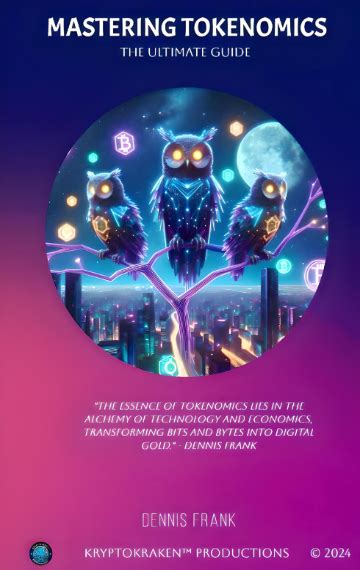The future of Tokenomics: Chainlink Insights
As the cryptocurrency world continues to evolve, a key aspect that received significant attention is tokenomic. Tokenomics refers to the mathematical model used to build and govern a cryptocurrency or other digital asset. It covers concepts such as supply and demand, token distribution and use rates, essential to understanding how a specific currency operates.
In recent times, Chainlink (Link), one of the main decentralized data networks, is at the forefront of the exploration of tokenomics meanders. With your innovative approach to creating and optimizing blockchain -based data feeds, the link is redefining the possibilities of tokenomics in the cryptocurrency space.
What are tokenomic?
Tokenomics is a multidisciplinary field that combines elements of economics, computer science, mathematics and more to create sophisticated models for the construction of cryptocurrencies. It involves analyzing various factors such as supply and demand, network effects and market dynamics to determine how tokens will work over time.
The tokenomics plays a crucial role in the formation of price behavior, negotiation volume and a cryptocurrency adoption rate. Understanding tokenomics, developers and investors can make more informed decisions about which projects are worth investing or participating.
Tokenomics approach Chainlink **
Chainlink has adopted a unique approach to the development of its technology, incorporating ideas from Blockchain’s economy, decentralized finances (Defi) and other relevant fields. With the main token link, Chainlink offers an unrivaled solution for creating robust data feeds that can be used to optimize various aspects of cryptocurrency negotiation.
TOKEN DISTRIBUTION
One -like aspect of tokenomics is the distribution of tokens. In a typical token economy, new currencies are coined with a fixed supply and sold through various market mechanisms. However, as blockchain technology continues to evolve, new approaches emerged to distribute tokens.
Chainlink’s focus on creating a decentralized data network has led to innovative ways to distribute the link between its stakeholders. The token is not simply distributed randomly; Instead, it follows a dynamic model that rewards liquidity providers, validators and other employees for your network participation.
token utility

Another critical aspect of tokenomics is the concept of token utility. Tokenomics aims to create tokens with specific use cases or benefits that drive adoption and use rates. Chainlink’s approach focused on creating the link as a valuable resource for data providers, allowing you to monetize your data and participate in the network.
LINK USE MODEL
Chainlink’s utility model involves three primary components: data feeds, liquidity provision and validator incentives. By encouraging developers to build and use their tokenomics models, Chainlink has successfully created a robust ecosystem that promotes growth and adoption.
DEFI AND TOKENOMICS INTEGRATION
The rise of decentralized finances (Defi) further highlighted the importance of tokenomics in forming the dynamics of the cryptocurrency market. Platforms Defi depend greatly on the use of intelligent contracts to create complex negotiation and liquidity mechanisms, which can be influenced by tokenomics principles such as supply and demand.
Chainlink’s partnership with Defi Projects has allowed him to explain these markets, creating a network effect that benefits both parties. By integrating its tokenomics models on defi platforms, Chainlink is not only boosting adoption, but also generating revenue through the use of the link as a utility token.
